► Driving range of 239 miles for e+ version
► Chassis mods for Europe, but still dull
► Nissan Leaf still strong value with keen pricing and kit
The Nissan Leaf has now been with us for over a decade, having arrived way back in 2010. Before Tesla, and the US firm’s Model 3 in particular, took the electric car market by storm, the Leaf was the best-selling EV and the default choice for many drivers in the UK. And, while some manufacturers are only just getting started on the road to electrification, Nissan’s second-generation leaf is already entering its fifth model year.
The Mk2 Leaf is a heavily reworked version of the original rather than a new, start-from-scratch design, and despite the arrival of stiff competition on virtually every front it still has something to offer. That’s why it’s still one of our favourite cheap electric cars. This is especially true of the larger-batteried e+ models, which can manage up to 239 miles of range between charges. That’s decent going when the starting price for these sits comfortably below many of its rivals, at £26,995. Although for that you get the smaller 40kWh battery (down from 62kWh) and a range of 168 miles.
Keep reading our extensive Nissan Leaf CAR review for the full breakdown – or click the links below to jump to the sections that interest you the most.
The Nissan Leaf e+
If you thought the longer-range e+ version of the Leaf would make the previous iteration redundant with its 62kWh battery, you were wrong. Instead both variants are sold together, with the former offering up to 239 miles of range at the top of the line-up and the latter only mustering 168 miles with its 40kWh unit. This looks a bit meek by modern standards, but it’s designed for people who aren’t overly fussed about driving long distances. And don’t forget, the Mini e and Honda E both cost more, yet offer less range (and interior space) in return for a more style-conscious design.
Best electric cars: the CAR guide

So to keep everyone happy we’ll cover both versions in this Nissan Leaf review, as they have more things in common than things that set them apart.
Second-gen Nissan Leaf: what’s different?
European versions get a different chassis tune to suit our ‘more dynamic’ driving tastes. So the bumph says, anyway. In truth the Leaf is appliance-like in its engagement levels – read ‘not very’.
Compared with Japanese-market models, the springs on a Euro Nissan Leaf are softer, the dampers are harder, the anti-roll bars stiffer (albeit by only 8 per cent) and there is extra structural reinforcement to help all other suspension stuff work more effectively. While all this undoubtedly makes the car feel less odd to European tastes, an alternative such as the now-discontinued Volkswagen e-Golf feels altogether more conventional. And satisfying.
Best used electric cars: the CAR guide
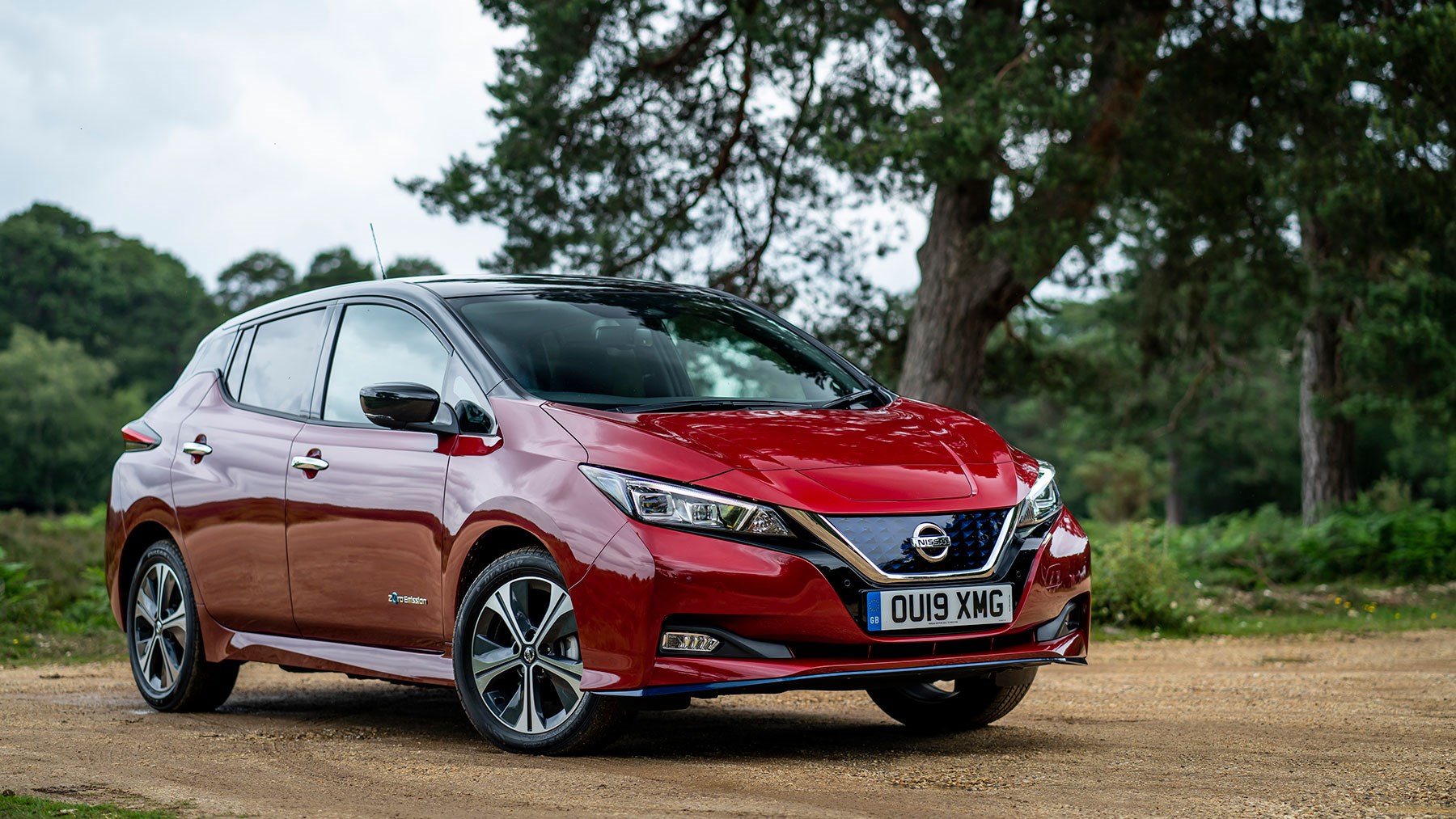
Euro-spec Leafs also get steering with 2.6 turns lock-to-lock rather than 3.2, which makes it more manoeuvrable around urban confines, but even with the revised steering weighting there’s precious little feel through the wheel itself.
Nevertheless, bodyroll is largely kept successfully in check, it’s grippy and it keeps much of the ride comfort of the Japanese-market cars, providing the surface isn’t too pock-marked. Together with the extra performance now available from the e+ version’s motor (a sub-seven second 0-62mph time ain’t shabby), we’d go so far as to say it’s modestly fun in a straight-line, eco-conscious sort of way.
There’s little visual differentiation between the smaller- and larger-capacity battery models. The e+ has a Metallic Blue front bumper trim, though you’ll need to look very hard to spot anything else. Inside, the NissanConnect infotainment system has had a minor upgrade, including a new head unit and TomTom Live premium traffic and route optimisation features. Aside from that the major changes are under the bonnet – well, more specifically, nestled under the car – in the form of a larger battery; but more on that later.
A bigger battery means a heavier weight – a chunky 2140kg – and a 7 per cent stiffer suspension set-up on the e+ to compensate. It’s not a huge increase, but the longer-range Leaf remains flat enough in the corners with respectable body control for a compact family hatch.
Tackle a British B-road and you’ll definitely feel the bumps, though not uncomfortably so, but a series of high-frequency undulations can become tiresome as the Nissan struggles to maintain its equlibrium.
We live with a Nissan Leaf electric car: check out our long-term test
With 40kWh of battery power to play with, Nissan has also increased the output from the standard motor – to 146bhp and 236lb ft. Those are upgrades of 38 per cent and 26 per cent, respectively, compared with the original Leaf.

That’s enough extra juice to drop the 0-62mph time from 11.5sec to just 7.9sec. Eat that, poisonous diesels. Top speed hits a modest 90mph to restrict the battery being sapped unnecessarily – more than enough for a motorway, at least.
With a larger 62kWh battery, the latest Nissan Leaf e+ kicks out 214bhp and 251 lb ft, cutting the 0-62mph sprint to 6.9 seconds. That’s around warm-hatch performance and means the Leaf e+ is reasonably quick off the line and tops out at a reasonable 98mph.
Both the Leaf and the e+ run out of puff far more noticeably at higher speeds than a combustion engine. But the delivery of instant torque you get with EVs like this remains massively entertaining. Step-off is nice and positive, too, making it a usefully thrusting companion in competitive urban dicing and much less buttock-clenching when overtaking slower countryside traffic. Both versions of the second-generation Leaf are front-motored and front-wheel-drive.
Should you still buy a diesel in 2020? We look at the pros and cons
Mk2 Nissan Leaf: driving range
As with all EVs with fairly small batteries, you must be realistic about how far you can expect to go on a single charge, and factor in stops for battery top-ups on longer journeys. That said, the extra range of the second-generation Leaf makes it a much more viable EV for many people.
How close you’ll get to the standard car’s 168-mile claim depends entirely on how and where you drive it. Give it a kicking and the range will descend very quickly; take a more measured approach, make the most of the Leaf’s various eco-assistance systems and you’ll rarely experience much range anxiety.
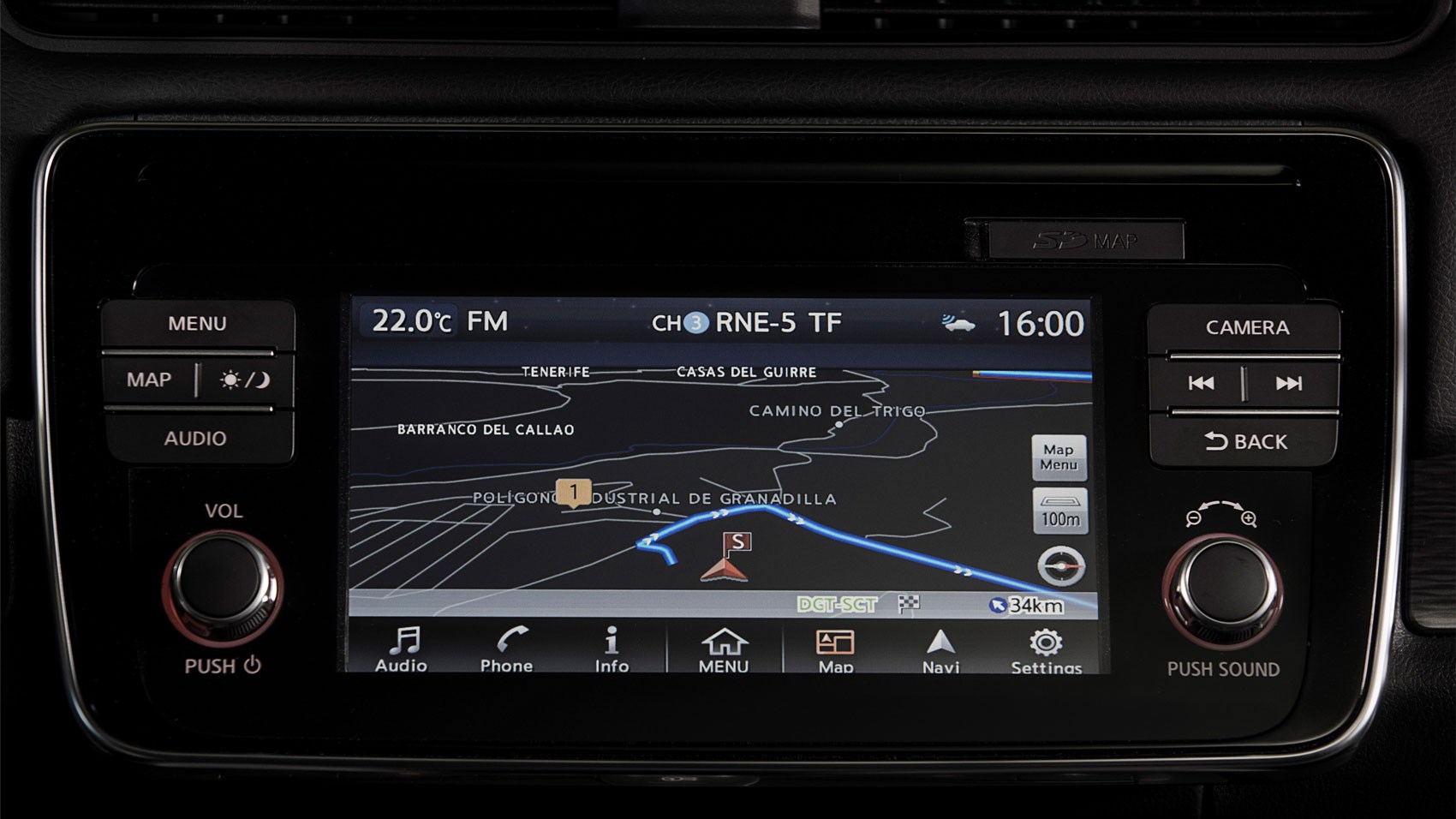
The Leaf e+ builds upon its predecessor’s range, tapping into a battery that offers a 55 per cent hike in capacity and around a 25 per cent improvement in energy density.
That translates to a ‘combined’ range of 239 miles, a 40 per cent increase over the smaller-batteried Leaf. Take it easy on the accelerator and Nissan reckons ‘city’ driving could yield up to 319 miles, which seems a tad ambitious.
A lot of the experience of Leaf driving, for both models, involves learning and practising how to get the best range out of the cars without plodding along at a dawdling pace.
People with a heavy right foot will feel the range decreases noticeably, but for those with more patience, there’s satisfaction to be had from figuring out how to eke out more range from the Leaf. All it really takes is practice. Only you know whether you’ve got the patience. Given driving the Leaf is generally a relaxing experience, there’s genuinely some pleasure to be had from figuring out how to make it go further.
How much does it cost to charge an electric car?
What are these eco-assistance systems?
Unsurprisingly, there’s an Eco driving mode, which reduces performance and other losses to maximise the battery range, plus a B – for Braking – transmission setting that carries over from the original Leaf. This increases the amount of regeneration you get from the motor when slowing down compared with the regular Drive mode.
What was new for the Mk2 Leaf should now be familiar to followers of Nissan’s EV range, with the e-Pedal taking care of acceleration and braking most of the time. Press down on the e-Pedal accelerator, and surprise, surprise, both Leafs pick up speed. Ease off and regenerative braking is applied, sending charge back to the battery while slowing the car down. This works very well at speed, but when shuffling around car parks at walking pace it becomes very jerky.
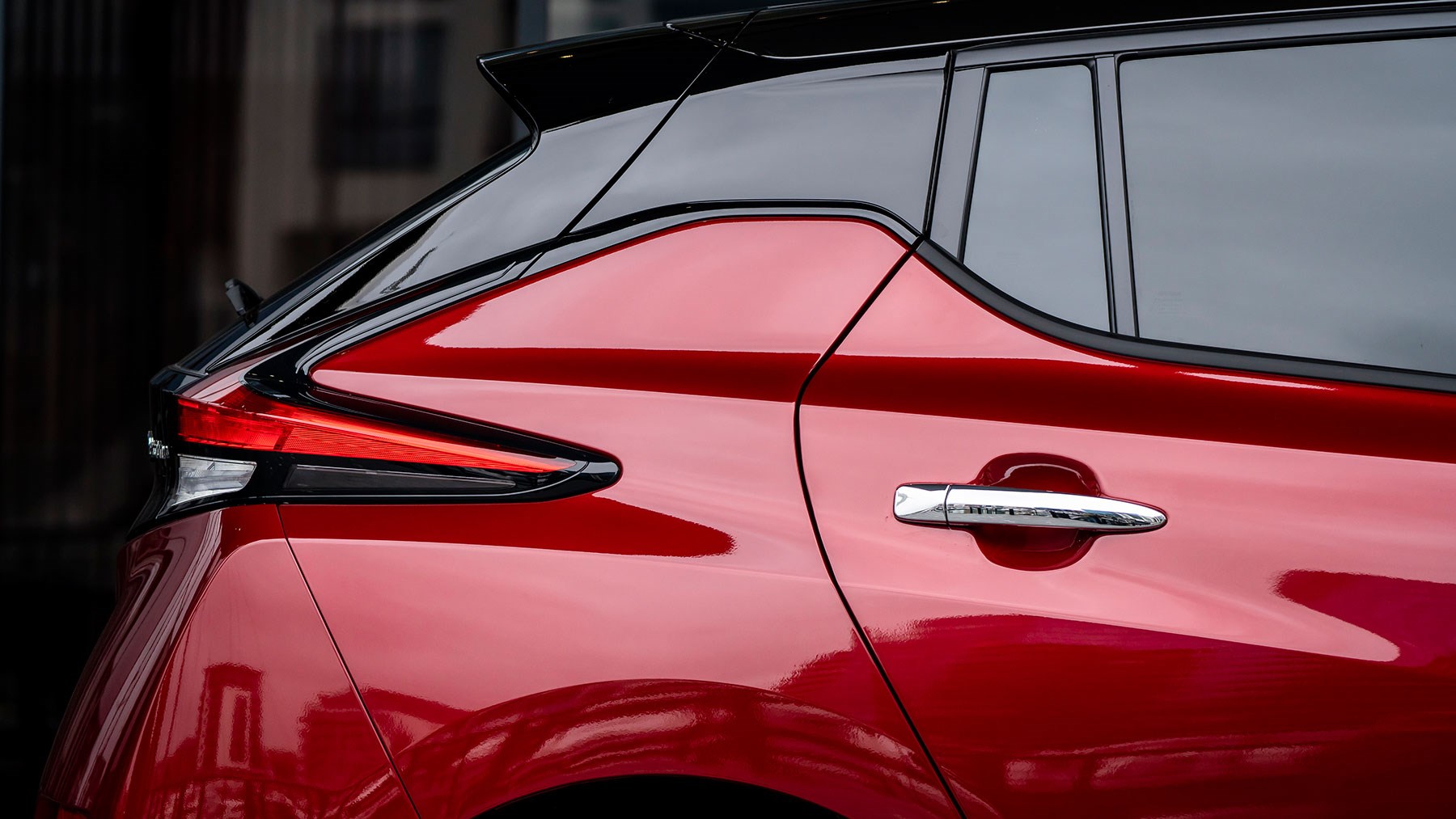
Similarly, when you barrel into a corner, you’ll still need to hit the brake pedal, as the e-Pedal isn’t quite snappy enough to apply the anchors at the drop of a hat. You’ll also be reminded about how lacking in feel the brakes are.
Given enough notice – which actually isn’t that much – the system will bring you to a complete halt, with the drag from the electric motor seamlessly blending with electronic activation of the old-school friction brakes as speeds decrease. For the same reason it even works when the batteries are completely full (which would make conventional regen-braking impossible).
We like it. It’s fun. But it’s also not that different to all those regen modes available using the paddleshifters in some rivals, and they give you more variable control.
Having the e-Pedal switched on all the time won’t allow you to make the most of momentum, which is another way of making the battery energy go further. But it’s so easy to use that lazy drivers will find it a boon. For the very best eco-progress you really need to juggle all the available settings. Something Nissan’s scattershot button approach doesn’t easily allow you to do.
Those four things – Eco, D, B and e-Pedal – essentially represent four driving modes. Yet they’re activated by three different controls, only two of which are in the same place on the centre console. The third is on the far side of the steering wheel.
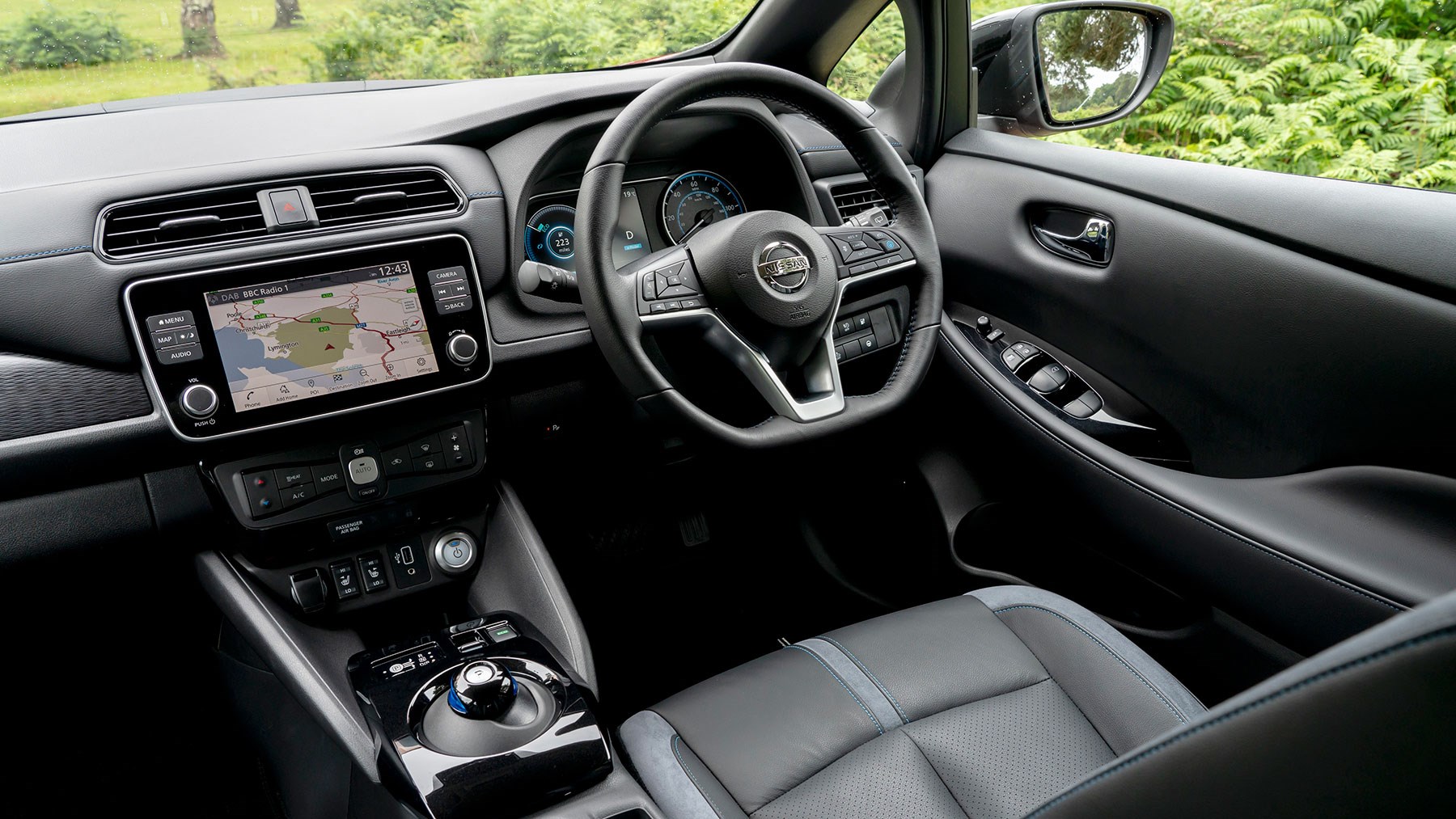
We counted over 50 buttons in total scattered around the Nissan Leaf interior. And this isn’t the only problem with the cabin.
What’s up with the Nissan Leaf interior?
It’s very different from the old one – less distinctive and divisive, as with the exterior. You’ll still find some hard plastics if you hunt for them, but overall the quality is higher, and the more ‘ordinary car’ design is less likely to alienate more conservative buyers.
There are still a lot of buttons, though, and while the 8.0-inch infotainment screen matches that of the entry-level (and now-discontinued) e-Golf, it falls short of the Volkswagen’s optional 9.2-inch upgrade.
The Leaf has Apple CarPlay and Android Auto, but the graphics remain grainy. It’s also rather laggy to respond at times – switching between the map and the main menu, there’s a notable pause that we timed at over a second.
Worse than this for us is the driving position. The front seats are very high (due to the battery pack under the floor), which is good for visibility, but little else. Unfortunately, the steering wheel only adjusts for rake, so you can’t bring it closer to you – making it rather a challenge to get comfortable for some.
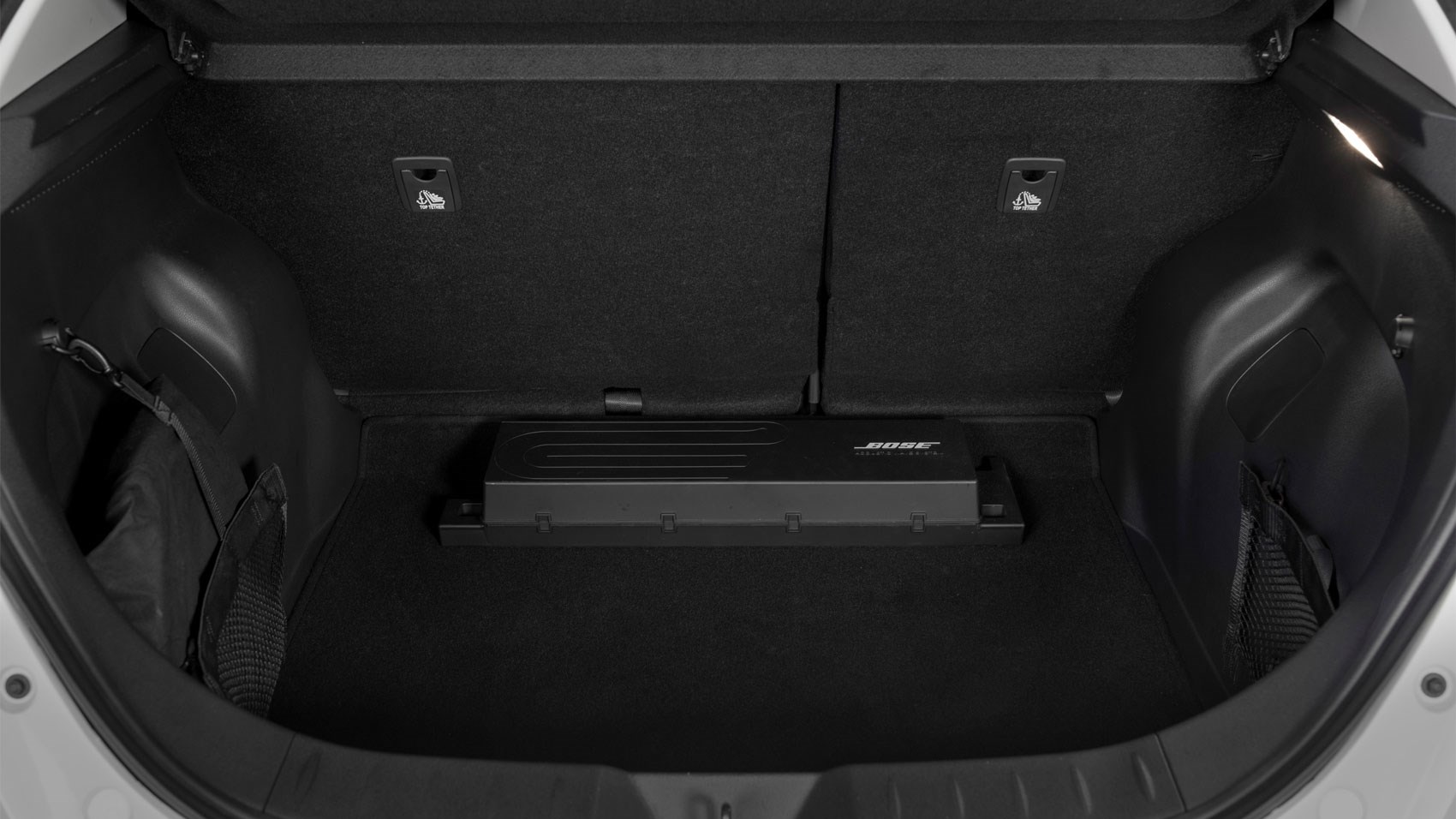
Still, the boot (above) is now 435 litres with the rear seats in place – larger than before and well ahead of most plug-in hybrid (PHEV) alternatives. But again, because of the battery pack, you don’t get a continuous flat load floor when you fold the rear seats down, and if you go for the Bose hi-fi system you’ll find a large box of electronics taking up some of it.
Charging the Nissan Leaf
Only got access to a three-pin plug? Then you’ll need 21 hours to charge up the 40kWh Leaf and a hefty 32 hours for the 62kWh Leaf e+; be prepared to plan ahead.
Thankfully, Nissan will sort you out with a wallbox if need be; assuming you’ve got somewhere to install it at home, this will do the same job for the 40kWh model in 7.5 hours. Plug the Leaf in overnight. Done.
You’ll need to be prepared for a later start with the Leaf e+ though, as charging to full using the wallbox will take 11.5 hours.
If you need to get going in a hurry then you’ll need to find a quicker charger, found at most public charging stations: the Leaf will accept anything up to 50kW, which will deliver a 20 to 80 per cent top-up in around an hour in the base-spec car. In the Leaf e+ 20 to 80 per cent takes closer to 90 minutes.
Nissan Leaf: pricing and value
Currently, the smaller battery Leaf comes in three trim levels: Acenta, N-Connecta and Tekna. UK prices start at £26,995, a figure which includes the £1,500 government electric car grant.
Meanwhile, the Leaf e+ only comes in N-Connecta and Teka trims, with the former starting from £32,945 on the road and the latter from £34,945. That puts it in the same league as the Kia e-Niro and the BMW i3, giving buyers in this price bracket plenty of choice.
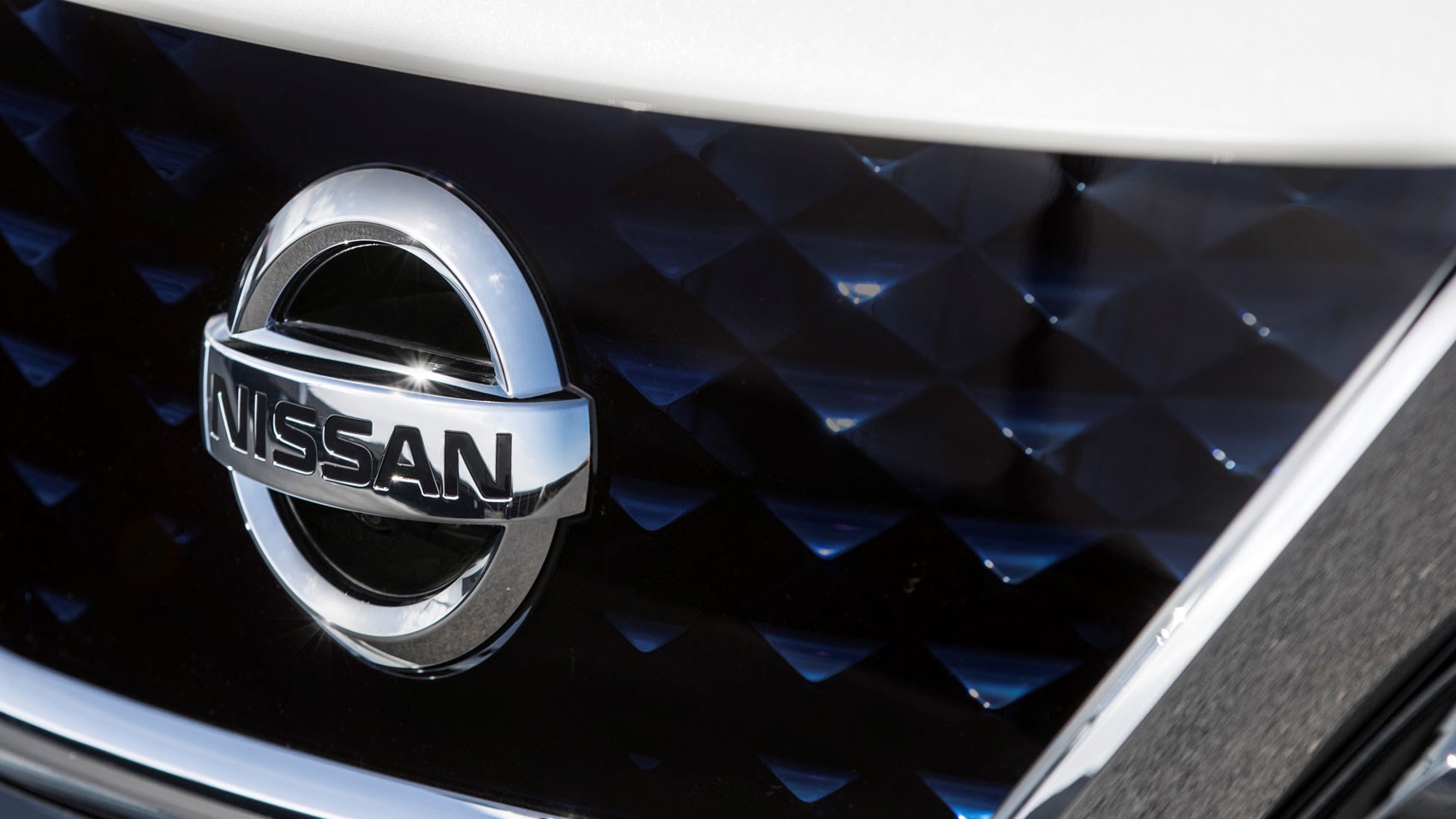
Anything else I should know?
The Nissan Leaf will park itself with a single button press if you spec the £795 ProPilot Park system. This is only available as an option on the top-spec Tekna trim level (for both battery sizes), but it is quite clever – using Nissan’s familiar 360-degree camera system, it can even cope with unusually sized and positioned parking spaces.
Tekna is also the only model that gets the new ProPilot ‘semi-autonomous’ driving system as standard (it is also optional on the N-Connecta). A fairly straightforward combo of active cruise control and lane-keeping assist, this is designed to make driving on the motorway easier.
There are considerably more sophisticated systems on the market already from other manufacturers, so we wouldn’t get too excited about that one.
Nissan Leaf: verdict
For a mass-market EV, the Nissan Leaf was already a strong car; this second-generation Leaf is a fairly impressive step up, particularly when you consider some rival manufacturers are only just getting started with manufacturing their first dedicated electric cars.
Leaf e+ adds more range and power into the mix, if perhaps not enough overall to make it much of a particularly worthy upgrade over its older sibling.
Nevertheless, both models of Leaf undoubtedly have far wider-reaching appeal than the first-generation car. We’re still not sold on whether the more reserved looks deliver much in the way of personality when compared to an i3 or Renault Zoe
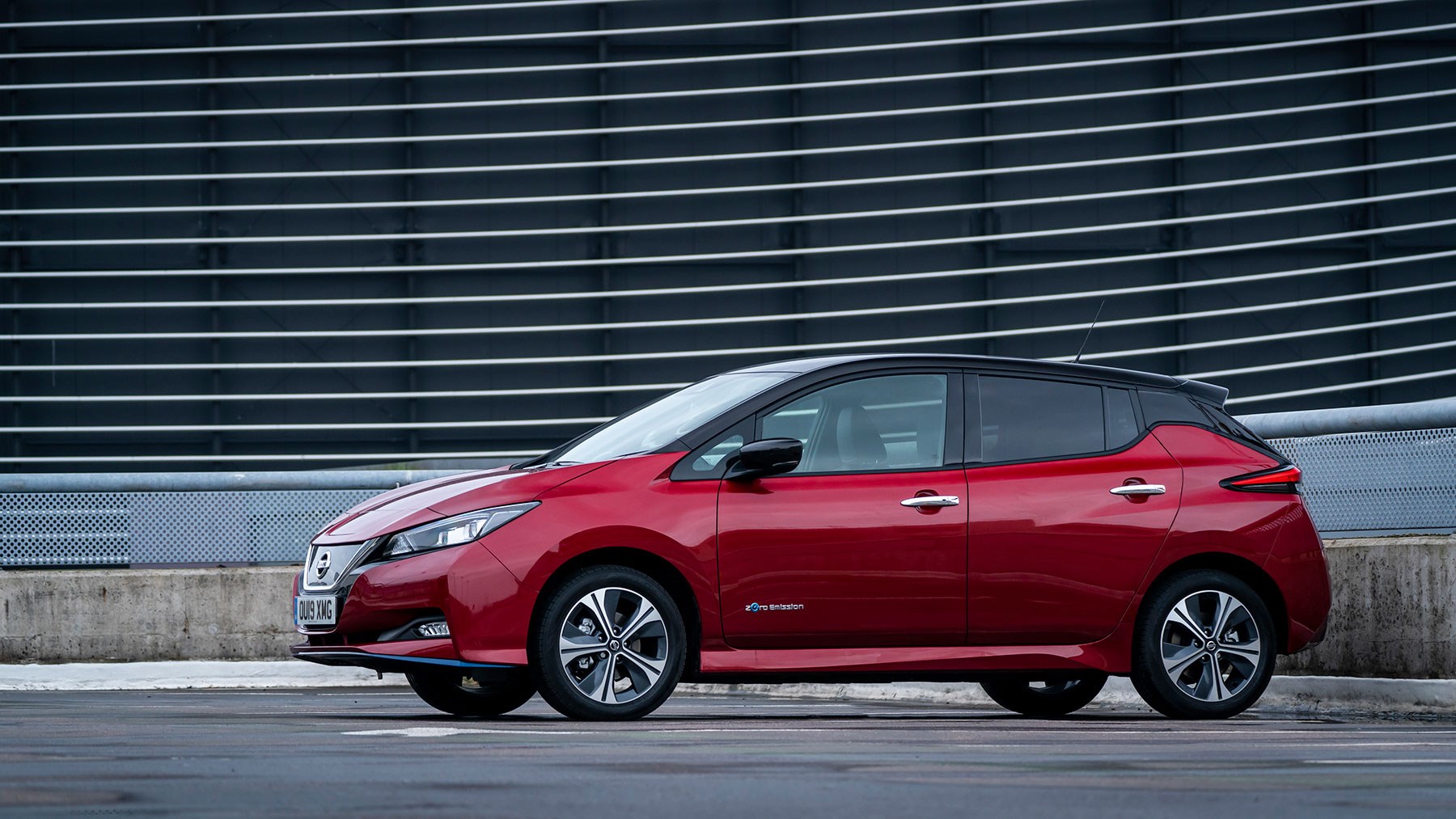
But we can see plenty of areas, including the control logic, interior design and ease of use, where there is plenty of room for improvement. And those chinks in the Leaf’s armour are being taken advantage of by the next EVs rival manufacturers have developed since the Nissan was launched.
In the small EV segment, the Leaf now has competition from the Peugeot e-208, the Volkswagen ID.3, the Vauxhall Corsa-e, the new Fiat 500e and the Hyundai Ioniq 5, to name but a few.
Nissan doesn’t appear worried though, claiming a 94 per cent satisfaction rating among Leaf owners – higher than any of its other models – is proof this electric car is extremely reliable, and customer loyalty is strong.
However, the Leaf is no longer one of the few all-electric cars around. In the face of increasing competition, we’ll have to see if it can maintain its success without releasing a radically upgraded third-generation model.
Check out our Nissan reviews
View Nissan Leaf lease deals